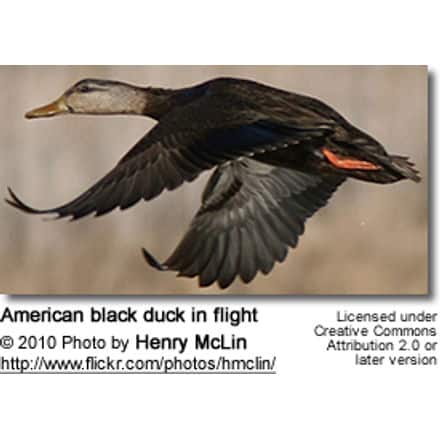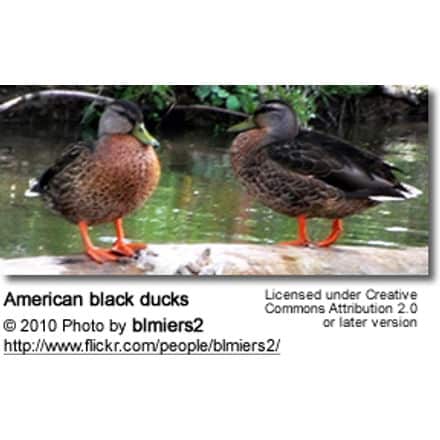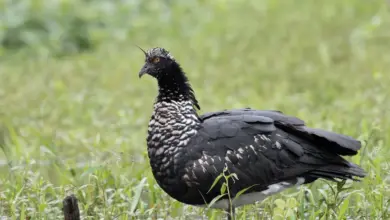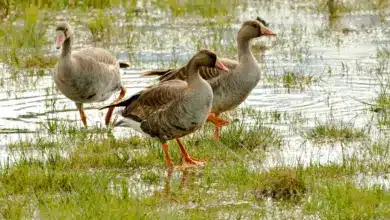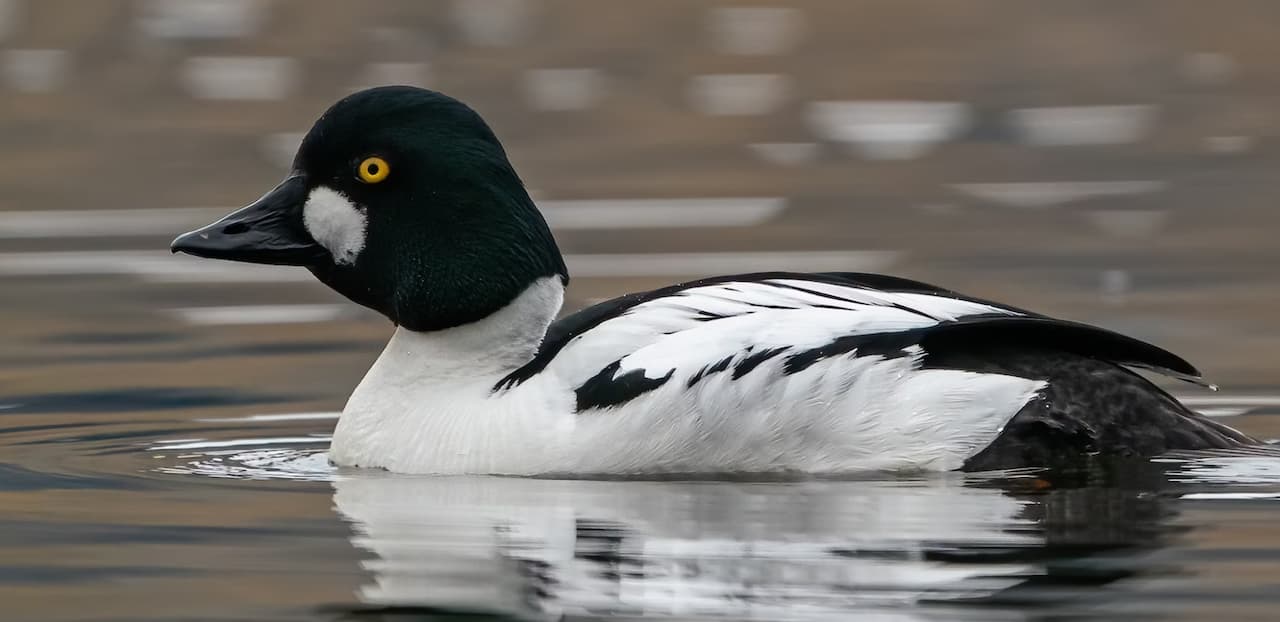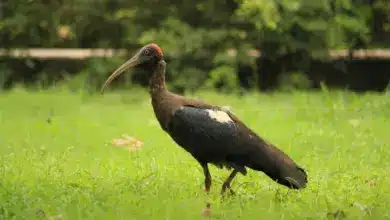American Black Ducks
The American Black Ducks (Anas rubripes) is a large dabbling duck that is commonly referred to as the “Black Duck.”
Description
The male and female black duck look alike, except the male’s bill is yellow while the females is a dull green.
The head is slightly lighter brown than the dark brown body. They have distinctive wing patches that are iridescent violet-blue in color with predominantly black margins.
The black duck has orange legs and dark eyes.
In flight, the white underwings can be easily seen.
Similar Species
American Black Ducks are about the same size of the mallards and resemble the female mallard in coloration, except the black duck’s plumage is darker. Their voices and behavior is also alike.

Comparison chart showing difference from female Mallard
Distribution / Breeding
Their breeding territories are northern Saskatchewan, Manitoba, across Ontario and the eastern Canadian Provinces, including the Great Lakes, and the Adirondacks in the U.S. They breed in alkaline marshes, acid bogs, lakes, ponds, rivers, marshes, brackish marshes, and the margins of estuaries and other aquatic environments.
The average clutch consists of 6 – 14 greenish buff colored eggs. The young hatch after about 30 days.
They regularly hybridize with the related Mallard Ducks.
They move south to winter in east-central United States, especially coastal areas; some remain year-round in the Great Lakes region.
They are rare vagrants to Great Britain, where, over the years, several birds have settled in and bred with the local Mallards.
Status
Their numbers have been declining – mostly due to habitat destruction.
Hybridization and competition with the Mallard pose another thread to the continued existence of this species
More Duck Resources
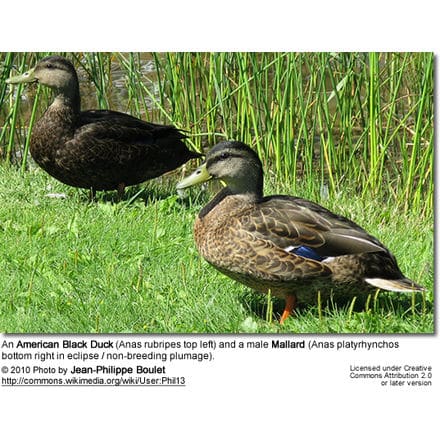
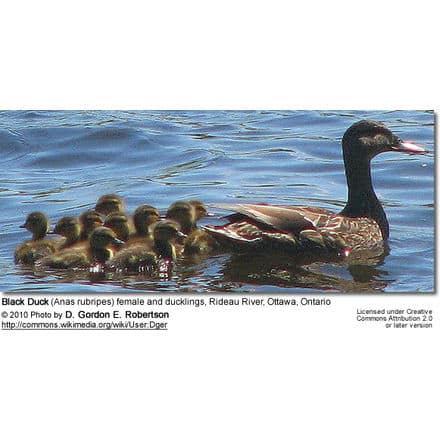
Diet / Feeding
These birds feed by dabbling in shallow water, and grazing on land. They mainly eat plants, but also some mollusks and aquatic insects.
Feeding Ducks …
We all enjoy these beautiful birds and many of us offer them food to encourage them to come over and stay around – and it works! Who doesn’t like an easy meal!
However, the foods that we traditionally feed them at local ponds are utterly unsuitable for them and are likely to cause health problems down the road. Also, there may be local laws against feeding this species of bird – so it’s best to check on that rather than facing consequences at a later stage.
- Foods that can be fed to Ducks, Geese and Swans to survive cold winters and remain healthy when food is scarce in their environment.
Please note that feeding ducks and geese makes them dependent on humans for food, which can result in starvation and possibly death when those feedings stop. If you decide to feed them, please limit the quantity to make sure that they maintain their natural ability to forage for food themselves – providing, of course, that natural food sources are available.

